- Clone
- Avas12 (See other available formats)
- Regulatory Status
- RUO
- Other Names
- Fetal liver kinase 1 (Flk-1), VEGF receptor-2, VEGF-R2, Ly-73, KDR
- Isotype
- Rat IgG2a, κ
- Ave. Rating
- Submit a Review
- Product Citations
- publications
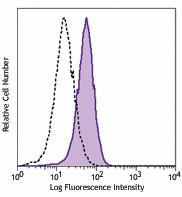
-

bEND.3 mouse endothelial cells were stained with CD309 (clone Avas12) PE/Cyanine7 (filled histogram) or rat IgG2a, κ PE/Cyanine7 isotype control (open histogram).
| Cat # | Size | Price | Quantity Check Availability | Save | ||
|---|---|---|---|---|---|---|
| 136413 | 25 µg | 123€ | ||||
| 136414 | 100 µg | 268€ | ||||
CD309 is also known as vascular endothelial growth factor receptor 2 (VEGFR2) and fetal liver kinase-1 (Flk-1). CD309 is a member of the tyrosine protein kinase family that contains a single pass transmembrane receptor with a protein kinase domain and seven immunoglobulin-like domains in the extracellular region. CD309 is expressed at high levels in adult heart, lung, kidney, brain, and skeletal muscle. It's a receptor for VEGF or VEGFC, and plays an important role in the development of vascular endothelial cells, hematopoietic cells, and vascular permeability.
Product DetailsProduct Details
- Verified Reactivity
- Mouse
- Antibody Type
- Monoclonal
- Host Species
- Rat
- Immunogen
- Murine Flk1 fused to hIgG Fc
- Formulation
- Phosphate-buffered solution, pH 7.2, containing 0.09% sodium azide.
- Preparation
- The antibody was purified by affinity chromatography and conjugated with PE/Cyanine7 under optimal conditions.
- Concentration
- 0.2 mg/ml
- Storage & Handling
- The antibody solution should be stored undiluted between 2°C and 8°C, and protected from prolonged exposure to light. Do not freeze.
- Application
-
FC - Quality tested
- Recommended Usage
-
Each lot of this antibody is quality control tested by immunofluorescent staining with flow cytometric analysis. For flow cytometric staining, the suggested use of this reagent is ≤1.0 µg per million cells in 100 µl volume. It is recommended that the reagent be titrated for optimal performance for each application.
- Excitation Laser
-
Blue Laser (488 nm)
Green Laser (532 nm)/Yellow-Green Laser (561 nm)
- Application Notes
-
Avas12 recognizes a different epitope than clone 89B3A5. Additional reported applications (for the relevant formats) include: Western blotting1 and immunohistochemical staining of paraformaldehyde-fixed frozen sections2.
- Application References
-
- Kataoka H, et al. 1997. Dev. Growth Differ. 39:729. (WB)
- Ishitobi H, et al. 2010. Exp. Anim. 59:615. (IHC-F)
- Product Citations
-
- RRID
-
AB_2561606 (BioLegend Cat. No. 136413)
AB_2561607 (BioLegend Cat. No. 136414)
Antigen Details
- Structure
- A receptor protein tyrosine kinase closely related to CD117 (c-kit) and CD140a (PDGF receptor α chain) of the immunoglobulin superfamily
- Distribution
-
Expressed at high levels in adult heart, lung, kidney, brain, and skeletal muscle
- Function
- Plays an important role in the development of vascular endothelial cells, hematopoietic cells, and vascular permeability
- Ligand/Receptor
- Vascular endothelial growth factor (VEGF)
- Biology Area
- Angiogenesis, Cell Biology, Immunology
- Molecular Family
- Adhesion Molecules, CD Molecules, Cytokine/Chemokine Receptors
- Antigen References
-
1. Kaburn N, et al. 1997. Development. 124:2039
2. Patterson C, et al. 1995. J. Bio. Chem. 270:23111
3. Nishikawa SI, et al. 1998. Immunity 8 (6):761
4. Shalaby F, et al. 1997. Cell. 89 (6):981 - Gene ID
- 16542 View all products for this Gene ID
- UniProt
- View information about CD309 on UniProt.org
Related FAQs
Other Formats
View All CD309 Reagents Request Custom Conjugation| Description | Clone | Applications |
|---|---|---|
| Purified anti-mouse CD309 (VEGFR2, Flk-1) | Avas12 | FC,WB,IHC-F |
| PE anti-mouse CD309 (VEGFR2, Flk-1) | Avas12 | FC |
| APC anti-mouse CD309 (VEGFR2, Flk-1) | Avas12 | FC |
| Alexa Fluor® 488 anti-mouse CD309 (VEGFR2, Flk-1) | Avas12 | FC |
| PerCP/Cyanine5.5 anti-mouse CD309 (VEGFR2, Flk-1) | Avas12 | FC |
| PE/Cyanine7 anti-mouse CD309 (VEGFR2, Flk-1) | Avas12 | FC |
| TotalSeq™-A0553 anti-mouse CD309 (VEGFR2, Flk-1) | Avas12 | PG |
| TotalSeq™-C0553 anti-mouse CD309 (VEGFR2, Flk-1) | Avas12 | PG |
| TotalSeq™-B0553 anti-mouse CD309 (VEGFR2, Flk-1) | Avas12 | PG |
Customers Also Purchased
Compare Data Across All Formats
This data display is provided for general comparisons between formats.
Your actual data may vary due to variations in samples, target cells, instruments and their settings, staining conditions, and other factors.
If you need assistance with selecting the best format contact our expert technical support team.
-
Purified anti-mouse CD309 (VEGFR2, Flk-1)
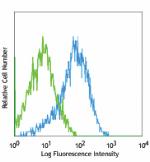
Endothelial bEnd.3 cells stained with Avas 12 PE -
PE anti-mouse CD309 (VEGFR2, Flk-1)

Endothelial bEnd.3 cells stained with Avas 12 PE -
APC anti-mouse CD309 (VEGFR2, Flk-1)
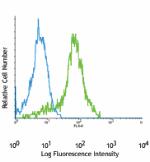
bEnd.3 endothelial cells stained with Avas12a1 APC -
Alexa Fluor® 488 anti-mouse CD309 (VEGFR2, Flk-1)
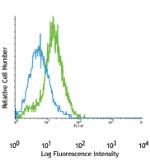
bEnd.3 endothelial cells stained with Avas12a1 Alexa Fluor® ... -
PerCP/Cyanine5.5 anti-mouse CD309 (VEGFR2, Flk-1)
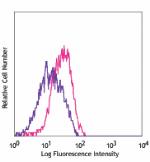
bEnd.3 mouse endothelial cells stained with Avas12 PerCP/Cya... -
PE/Cyanine7 anti-mouse CD309 (VEGFR2, Flk-1)
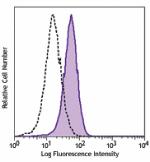
bEND.3 mouse endothelial cells were stained with CD309 (clon... -
TotalSeq™-A0553 anti-mouse CD309 (VEGFR2, Flk-1)
-
TotalSeq™-C0553 anti-mouse CD309 (VEGFR2, Flk-1)
-
TotalSeq™-B0553 anti-mouse CD309 (VEGFR2, Flk-1)
 Login / Register
Login / Register 










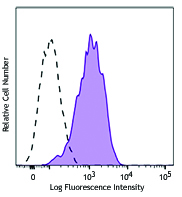
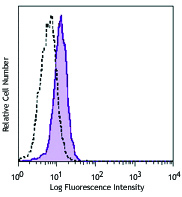
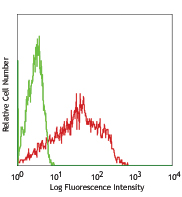
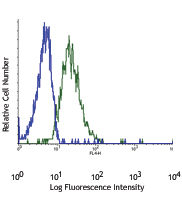



Follow Us